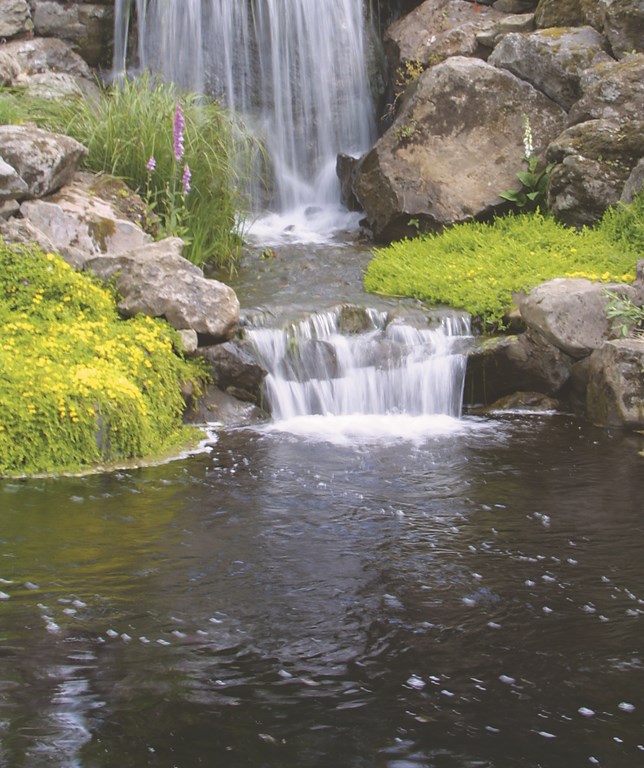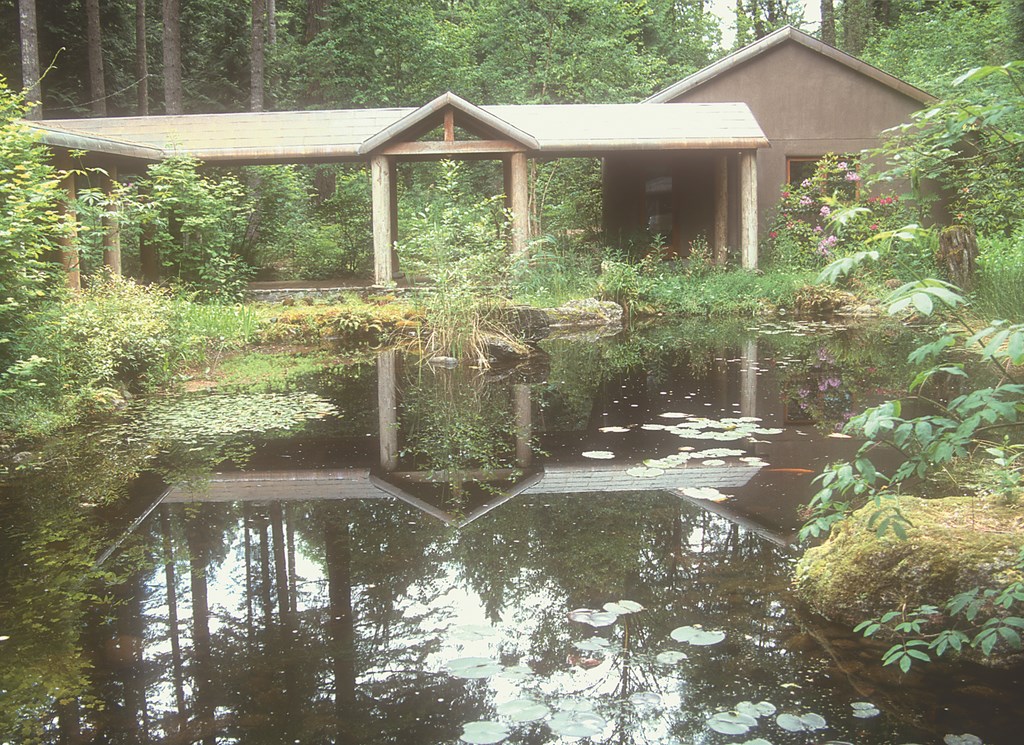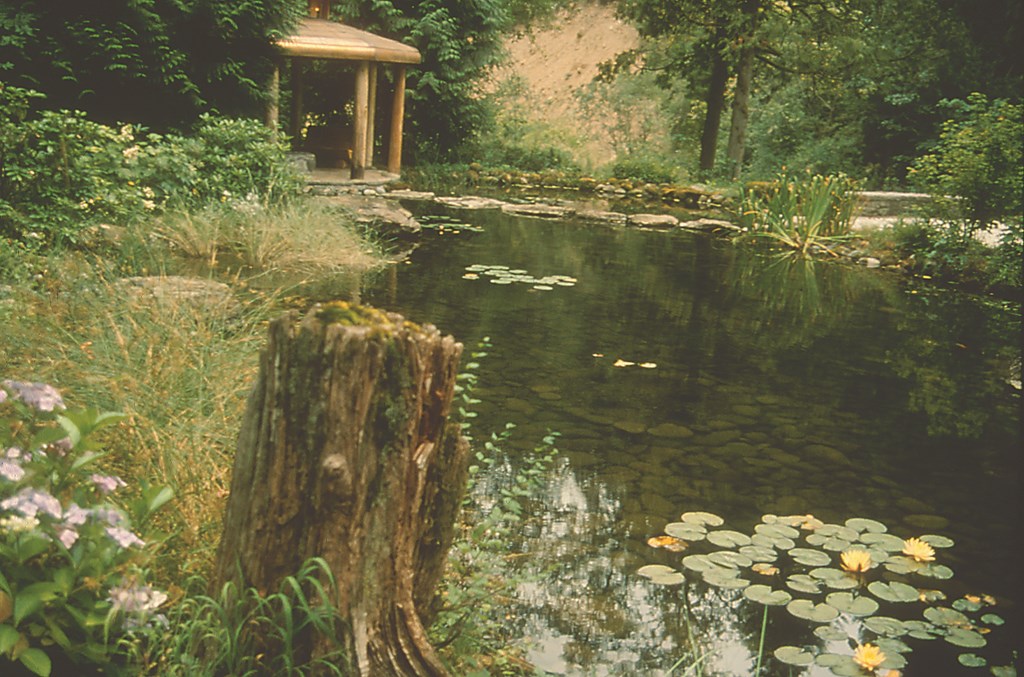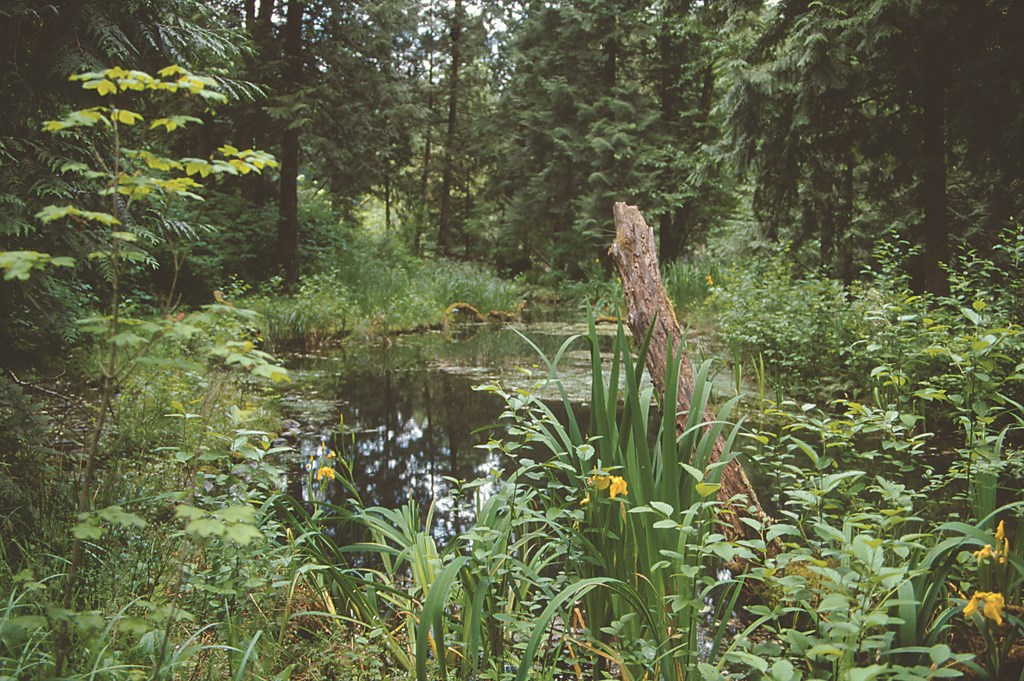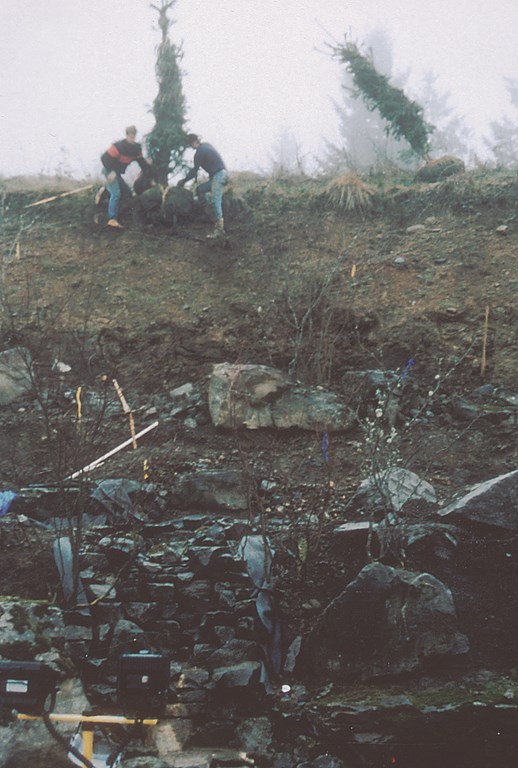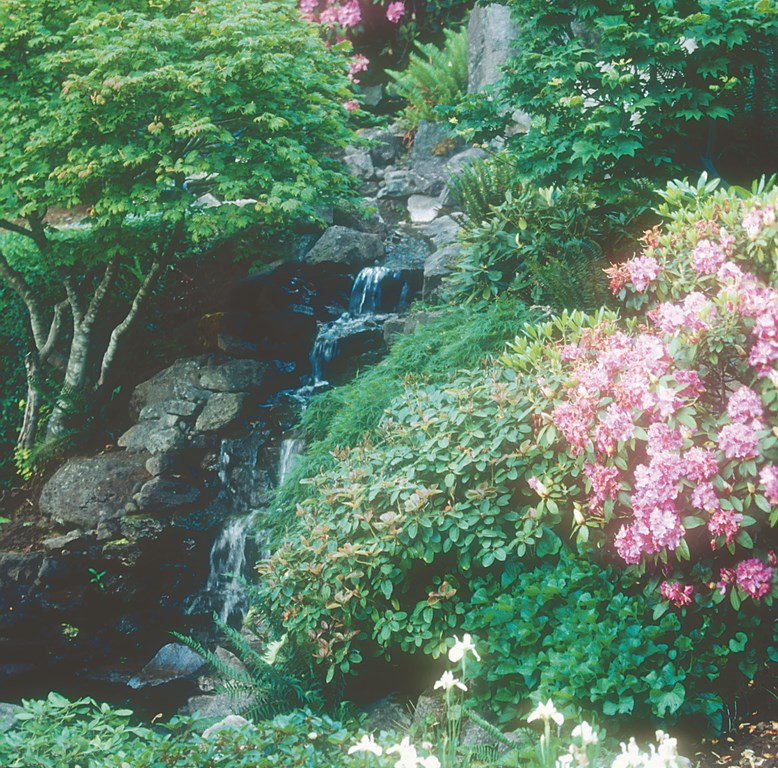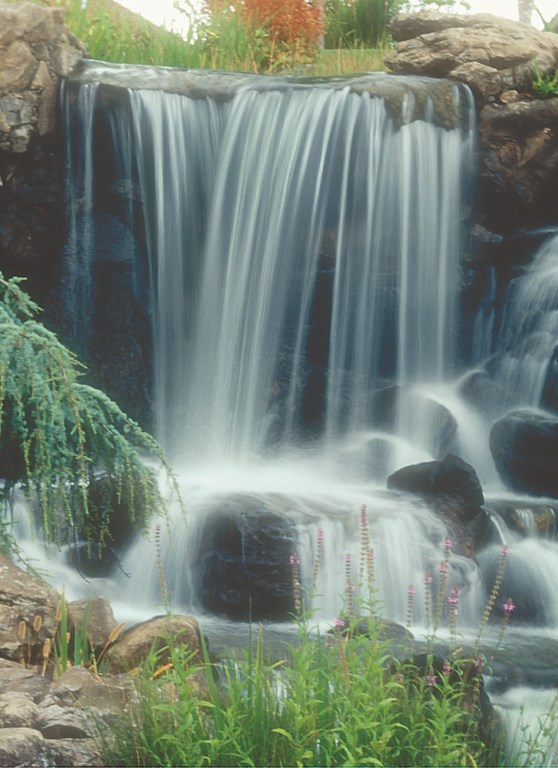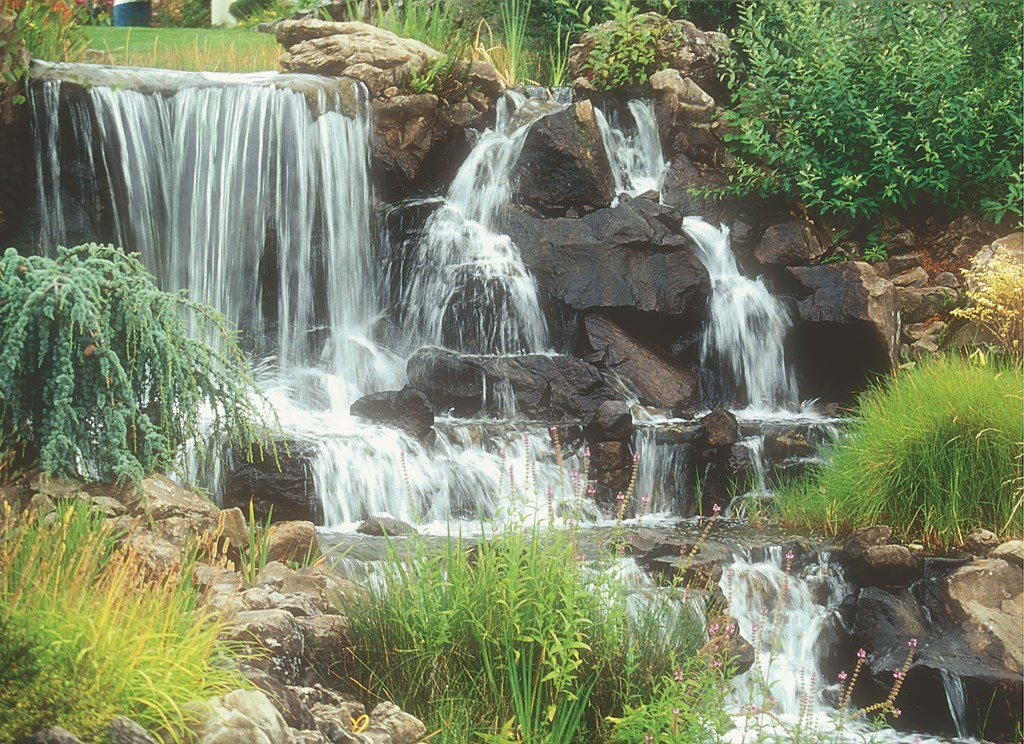Natural Patterns
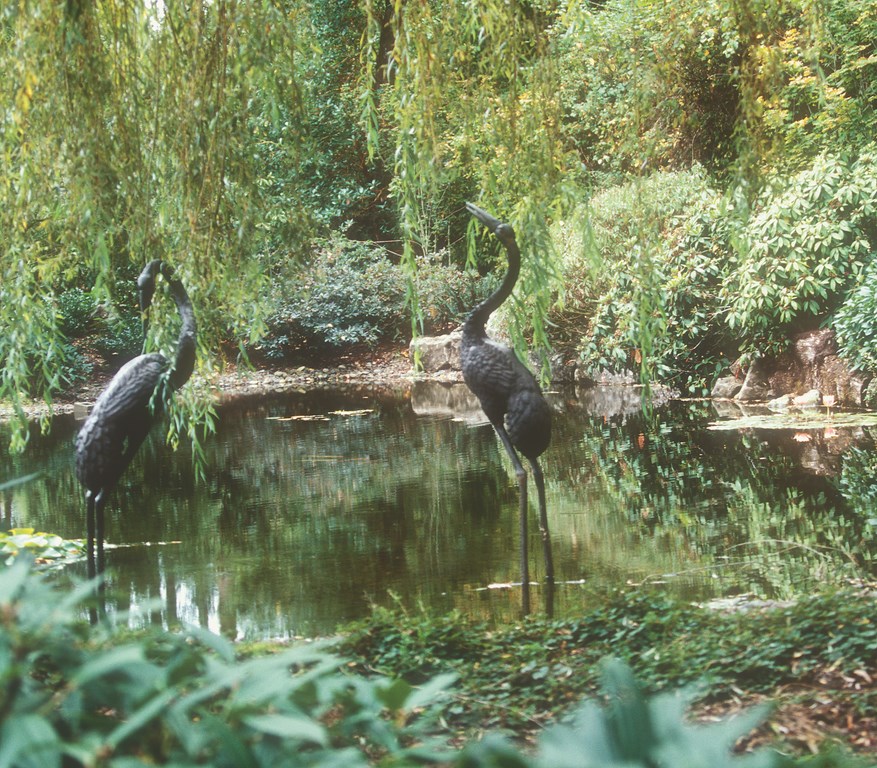
So often, design comes down to an ability to see patterns.
I first learned this from my mother, a dressmaker who had an uncanny ability to look at garments for which there were no sewing patterns and then sit down and make them from scratch. I seem to have inherited this talent, taking in a barren landscape and quickly visualizing how it will look with plants, rocks and water. For this, I am happily in her debt.
Not everyone comes across such a gift by birth, but I believe that the ability to visualize is something most any watershaper can develop through experience and by taking the time to learn the “language” of any given landscape.
This is important, because those who don’t have that experience or know that language have unfortunate tendencies to regard nature as random when the truth is quite nearly the opposite. In fact, there are almost always underlying principles of order in nature and patterns to the way nature does things, and it is our job as designers to understand and make use of them as we visualize and plan the work.
ACROSS THE SPECTRUM
Our firm is based in Oregon, where there’s an abundance of wonderful natural environments that raises the expectations of clients at all levels. Our surroundings effectively keep us on our toes in striving to create spaces that fit in with forested, mountainous terrains laced with seemingly endless varieties of natural bodies of water, large and small.
This natural beauty is inspiring, and I’m always trying to improve my techniques to reach that almost-magical point where observers will think that the water and the landscape I’ve completed have been there forever.
My ability to visualize is critical in this process, but the work initially flows from discussions with clients who tend to carry entirely different sets of patterns and perceptions to the site. To determine what those are, I work to find out how they’re going to “live” with the garden: Will they be outside much of the time, moving through the space itself, or will they primarily enjoy what they see from inside the house? Will they enjoy the space each evening, or will it be something that draws their attention only on weekends?
Once I’ve assimilated use and lifestyle factors, I begin positioning elements in the space in accordance with their input, always keeping the surrounding environment and the features of the site firmly in mind.
| INDIGENOUS landscapes and rock formations are our points of departure in approaching projects in any given location. While we might be able to reproduce a slice of Oregon in a Texas backyard, it would hardly convey the key impression that it had ‘been there forever,’ nor would it be particularly sustainable. |
These tasks differ from location to location, of course, and I’d never recommend trying to create an Oregon-style garden space in Arizona – not so much because it can’t be done, but because it wouldn’t be sustainable. Nor would I press Oregon-style elevation changes and lush landscaping on a project on the flatlands of Texas. Yes, it could be done, but in such locations I think in terms of streambeds.
No matter the location, however, all artificial watershapes do have certain things in common: In all cases, you’re digging a pond or streambed or contouring a watercourse for some sort of waterfall and using a liner or membrane to contain the water. The secret to aesthetic success of the sort my clients demand is more then knowing how to contain and control the water: It’s about what we do on top of the liner to create something of beauty – a two-pronged process.
These two prongs – selection and placement of rock on the one side and deployment of the planting palette on the other – define our work from its most dramatic features to its subtlest details. They have everything to do with how people will see and experience the water itself.
In both cases, you’re working with natural materials that are always somewhat different. As a result, the design must allow for a certain amount of variation and flexibility that, set against good, fundamental design principles, magnify your capacity to create satisfying outcomes.
ROCK STEADY
The arrangement of rock material in gardens is a huge topic if only because every geographical area has its own natural geological features and set of indigenous materials that tend to drive selection.
In Oregon, for example, rocks are available with blooms of moss or lichen, and we also have abundant supplies of rounded river rocks as well as fractured, angular stone. Even in so basic a choice, however, it must be noted that things change with time: For example, where rocks with lichen, moss and other outstanding features were once readily available in lots of local quarries, those supplies have diminished through the years and we now must look farther afield to find sources for the rocks we need.
Just how far we look in making our selections is, of course, determined by the nature and demands of the design. If we’re working in a garden that’s going to have full sun all day, for example, there’s no point in using moss-covered boulders because their distinctiveness will fry off the surface in a short time. Cost quickly becomes an issue as well, because great care must be used in harvesting and transporting moss-covered boulders – care that influences the cost of the installation as well as its aesthetics.
| PLACEMENT of rock is another project phase in which we pay close attention to local terrain and focus on the sort of natural patterns that result as landscapes form over time. Always, we avoid the studied ‘randomness’ that makes so many compositions seem ironically unnatural. |
Beyond selection (and availability), one of the keys to creating a natural-looking garden is placement of the rock – another area in which location defines the approach. In many parts of California, for example, it’s entirely appropriate to set large, flat pieces of rock at odd angles as a mirror to the seismic processes that shape the landscape. In the northwest, by contrast, landscape features are weathered by rain and flooding, so the design vocabulary features visible bedrock eroded by wind and water. Local waterfalls literally carve their way into bedrock – a distinctly different look.
Some rock setters will try to make their work appear irregular as a way to avoid an artificial look. The result is most often a denial of local geology and something that, ironically, will seem even more artificial and out of place.
In our projects in the Northwest, we set a horizontal plane in our rockwork, meaning every major rock in a given transition is on the same plane, as would happen with exposed, eroded bedrock. When the water starts flowing over the waterfall, the rock recedes into the view and doesn’t jump out at you, leaving the water as the most visible feature. If, by contrast, you set up flat slabs adjacent to the waterfall and then all of a sudden there’s one at a 45-degree angle, that upturned rock will dominate the field of view and will be seen before anything else.
This can be somewhat counterintuitive. After all, clients spend lots of money on beautiful rock, yet we tell them our goal is to make it go away visually. Eventually they will understand what you mean – and it will be easier to do so if the rocks you select and place reflect the natural geology of the area in which you’re working.
PLANT MATTERS
Our work with plants is just as intense and complicated as our selection and placement of rocks, with a similar legion of issues to consider.
To sort things out, we separate plant considerations into two classifications: There’s what we do with plants to be located in the water itself or within the rockwork of the watercourse, then there are plants that work away from the edges and blend into the surrounding area.
In a watercourse, for example, we often develop natural frames for waterfalls and cascades using plant material. We begin with taller structures on either side of the watercourse that draw the eye down a corridor to the waterfall. This is much more effective than using low, flat plants on either side in a way that disperses the observer’s focus instead of concentrating it.
| SIMPLIFYING development of our planting plans, we divide our focus into two categories – plants to be set in the water or within the watercourse’s rockwork on the one hand and, on the other, plants that move away from the water’s edge and into the surrounding terrain. |
Outside the watercourse, we sometimes use plants to hide portions of the water from various angles to give the setting a sense of mystery and discovery. When visitors need to peek around a large tree to get a fuller view of the water, for example, you’re rewarding them for looking more deeply and more intently into the setting and also drawing them deeper into the garden with their eyes and their feet.
The transition areas between the watercourse and the surroundings are complicated by the fact that there are a number of ways to proceed. We’ll often choose a certain area that will be very lush, transitioning from water to dry land through bog plants and then into terrestrial plantings. We also do a lot with terrestrial plants that provide foliage that hangs over rocks and may even touch the water.
As in nature, our clients and their visitors expect to see plants at various stages of growth. To that end, we generally install some mature structural plants so that the garden won’t take four or five years to look complete and balance them with younger plants – especially low-profile plants that interact with the rockwork.
What’s so interesting about working with natural patterns is that the way you apply them differs to one extent or another with every project you approach. The four case studies that follow define some of those distinctions, exploring projects with different design objectives and settings.
The Oregon Garden
This waterfall is located at the entry to the new Oregon Garden in Silverton. What we wanted here was to create an impression that the falls had eroded the surface all the way back to bedrock.
A horizontal plane cuts across the whole composition. Although some of the rocks are not perfectly oriented to that plane, the basic flow of shapes works visually off a single linear orientation – just as you’d see it in nature, where some of the boulders will have sheared off the face from a single plane of bedrock.
The large sheeting fall on the right features a beautiful, L-shaped rock that provides a wonderfully irregular curtain effect that gives the appearance of natural erosion. The left side of the waterfall illustrates water still in the process of eroding through the bedrock.
We used native sedges, Foxgloves and various creeping aquatic plants to soften the look of the rock and ease the transitions to surrounding vegetation and overhanging plant material.
The Brown Residence
This design on the Lewis River in Washington is all about tranquility.
The clients use the cabin as a weekend getaway from their stressful jobs. The yard was originally all lawn, but now it features a pond that nestles right up against their front door. To get there, they walk along a path through a portico that takes them right along the pond. There’s water on both sides – enough to start them unwinding even before they put down their overnight bags.
| PROCESS: The yard before pond installation (left) gave way to a collection of great views — of the main pond with the portico in the background (middle left), across the pond to the gazebo (middle right) and of the wetland area beyond (right). |
From the path, they look across the water at a small circular fire pit and shade structure that works as a sort of sculptural element. Stepping stones lead to that area, where they’re rewarded by views of the cabin and portico as well as Douglas firs and Alders that provide beautiful reflections off the quiescent surface of the pond from all viewpoints. A small waterfall to one side offers a gentle sound of running water – all very subtle.
|
Issues of Clarity There’s a basic philosophical difference between European and American pond owners. If you go to Scotland in April and say to someone, “There’s algae in your pond,” they’ll look at you and say, “Yeah, so what? It’s April.” In Europe, most watergarden enthusiasts are satisfied to know that as summer progresses, the algae will generally disappear as part of the natural cycling of the seasons. In the United States, however, there’s a near-maniacal demand for pristinely clear water – a demand we do our best to meet. To do so, we’ve analyzed the causes of poor water quality and have found that fertilizer from adjacent lawns is a major contributor that can be minimized with a bit of close communication with the landscape-maintenance company. Another big issue is owners who over-stock the water with fish, thereby introducing a high nutrient load to the water. Beyond walking our clients past those two thickets, we know that one way to achieve biological balance in a pond is to plant it heavily and use the plants to lock up nutrients. To that end, we build planting pockets in shelves by the water’s edge, covering them with a gravel “finish” that encourages natural filtration. We also try to cover as much of the margins of the pond as possible with aquatic plants that thrive under wet conditions, always keeping viewpoints in mind and tending to use plants with low profiles. As a rule, I also try to cover a third of the water’s surface with water lilies or other aquatic plants. This cuts down on penetration of ultraviolet light and provides cover for the fish from predators. — E.H. |
In this case, much of the landscape is visible through architectural structures, so we worked to create separate “pictures” through each opening as a means of fully integrating the home and its surrounding structures with the landscape. The copper roof has oxidized and blends beautifully with the verdant landscape, while the cabin’s plaster was colored to match the purple-hued bark of the Douglas firs.
The pond itself has proved something of a marvel in the 15 years since it was first installed, having proved much more self-sustaining and far less of a maintenance burden than the lawn it replaced. It works because it’s heavily planted and gets a great deal of shade during the heat of the day, which cuts down significantly on algae growth.
In another area of the property, we created a natural wetland that has been stocked with fish to attract predator birds to the environment. Herons, kingfishers and ospreys are now regular visitors, adding even greater interest and awesome natural tranquility to the space.
King Residence
The situation we found when we were called to this site was a bit daunting: No more than 15 feet from the back of the home was a vertical wall.
We began our work by excavating into the expanse, pushing the slope back about 40 feet to create room for a patio. Above that, we terraced the slope, covered it with a compost soil mix and craned in moss-covered boulders. These boulders were positioned in holes and then backfilled with soil so that each was half buried, just as they all would be in a naturally eroding slope.
We built a small watercourse of delicate rivulets that cut across the slope and among the boulders before descending into a main fall by the patio area. In this case, the water falls into a hidden 2,000-gallon tank buried beneath the patio. Among the key plantings is a Vine Maple that clings to the slope to create a dramatic focal point.
This was a challenging installation because we had get permission to access the lot above the waterfall and winch down large rock and plant specimens, including various maples, birches and pines.
The Claremont Development
The main waterfall in this feature in Portland, Ore., is the culmination of nearly 500 feet of streambed that runs by a number of homes situated above the waterfall. Other portions of the composition offer contrast through a variety of interacting rivulets. All of the water eventually drops into a large pond surrounded by four homes that all have direct (but unique) views of the waterfall from their back patios.
We planted the falls with native rushes and sedges to soften the look of the rock and to create a transition into the surrounding landscape. We also used an Atlantic Cedar on the right to imitate the waterway visually.
|
Parting the Curtains Truth be told, a perfectly uniform weir will almost always look unnatural. Just as bad, it will create a uniform, monotonous sound as the water falls straight down. You can hear the sheeting water from a good distance away, but you’d be hard pressed to call the noise relaxing, especially when you compare it to the gentle babbling of a rock-strewn cascade. To achieve that gentler sound, we mix things up. We might have one section of the waterfall flow over a tumbling section and another that might form more of a sheet fall – an approach that works both visually and aurally. The great advantage of babbling sections is that you can “tune” them: If you’re not happy with the sound the way it is, just move a few rocks around to improve the sound without disrupting the work visually. — E.H. |
Our objective here was a set of garden spaces and watershapes that would add value to every home located along the stream. This led to lots of maneuvering with the stream’s course to create small rivulets at various locations or present waterfalls to specific viewpoints from one or another of the homes or set up water effects to create interest behind or between homes.
In this case, our work translated to dollar signs for the developer: Each home along the streambed commanded a premium, while the four homes with waterfall views went for top dollar (and were the very first to sell – within days, in fact).
Eamonn Hughes has been designing and constructing water features in Europe and the United States for over 30 years. A native or Ireland who moved to Oregon in 1987, he has built hundreds of naturalistic watergardens in the Pacific Northwest and has developed Hughes Water Gardens, a 10-acre retail and wholesale nursery just south of Portland in Wilsonville, Ore., where he grows pond plants and sells a full line of pond construction and maintenance supplies. Hughes received “The Retailer of the Year 2001” award from the Oregon Association of Nurserymen, co-authored the book Waterfalls, Fountains, Pools & Streams (Sterling Publishing) and was a contributing author for Rock Garden Design and Construction (Timber Press). He has also produced a video, “Creating Your Own Water Garden,” as a step-by-step guide to construction of waterfalls and ponds.




















